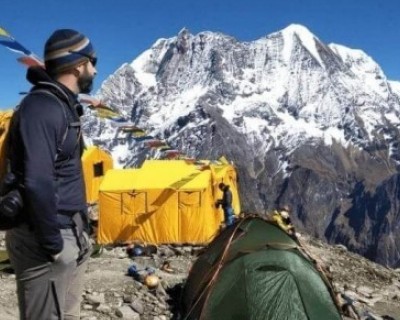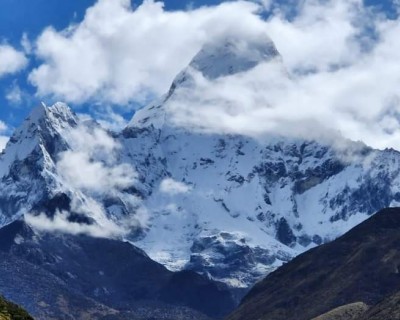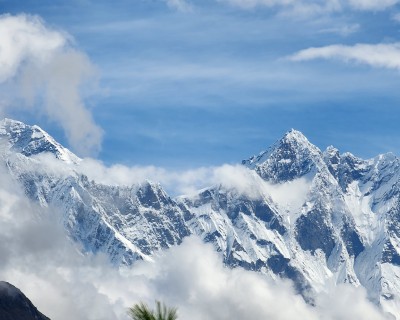Is the Everest Base Camp the right trip for you?
Everest is the perfect destination for a travel enthusiast. Trekking on Everest is a lifetime dream and opportunity for every trekker and adventure lover. The amazing journey takes you through an incredible ride to the foothills of the renowned World's highest mountain Mt Everest. Walking through the dense forest of blooms rhododendrons, scattered villages of Sherpa and Tharu/ Magar community, jaw-dropping views of the towering snow-capped mountain. So if you want to experience nature, Himalayan culture, and geography in its pure form, then the Everest Base Camp Trek is best for you. You get to know the wonderful rich cultured ethnic villages and towns. The views are beyond the imagination to melt your heart with excitement and happiness. Below mentioned reasons are enough to attract you to Everest Base Camp Trek.
Sagarmatha National Park
On the way to Namche Bazaar, we will cross the UNESCO heritage Site of the Khumbu region, Sagarmatha National Park. Due to the protected area, you need permission to enter this park. Here you can experience the Himalayan-based ecosystem which includes the dense forest of pine, oaks, and bamboo, and also the center of numerous endangered flora and fauna. Walking deeper into the woods you might get to see some rare animals like red pandas, snow leopards, Himalayan Thar, and a few others. The journey is beautifully connected with nature and humans.
Hillary Suspension Bridge
Hillary Suspension Bridge is the highest suspension bridge in the Khumbu region that lies over the Milky Dudh Koshi River. Walking through this bridge provides a thrilling and exciting experience at the same. Surrounding by the dense green forest with a small glimpse of the snow-capped mountains, the bridge in itself is an adventure. The religious prayer flags around the bridge give you religious vibes.
Namche Bazaar
Namche Bazaar-the largest Sherpa settlement of the Khumbu region. Namche Bazaar is an option as the rest and acclimatization destination for most Everest region trekking including Everest Base Camp Trek because it is the perfect place to enjoy a glimpse of the snowy peaks like Kongde Ri, Thamserku, and also Everest with a cup of tea. Exploring throughout the town, you will see the numerous cafes, restaurants, lodges, bakeries, museums and handicraft shops. During the rest day, you can also hike to Everest View Hotel to enjoy the view of Mt Everest.
Sherpa people
Another reason to trek the Everest region is to experience the Sherpa lifestyle. The unique culture and traditions of the people show the lifestyle of the famous mountaineering community, you will fall in love, and you will see their warmth and amazing hospitality. Highly influenced by the Buddhist and Tibetan culture and tradition, the simple lifestyle of the locals is very admirable.
Tengboche monastery
Tengboche monastery is the largest and best Buddhist stupa in the Everest region which was built in 1916. The monastery is located in the hillock of Tengboche village on the convergence of the Dudh Koshi and Imja rivers. From Tengboche Monastery, you can have remarkable views of peaks like Everest, Nuptse, Lhotse, ama Dablam, and Thamserku. This monastery is the home to thousands of monks who perform daily Buddhist rituals. Besides that, the Tengboche monastery is famous for the Sherpa festival held once a year which is called the Mani Rimbu festival.
Renewing snowy peaks
As the walk goes deep into the Himalayas, you will see the breathtaking views of the snow-capped mountain. You can enjoy the amazing views of the towering peaks. The view of the world's iconic peak Mt Everest and other surrounding mountains like Ama Dablam, Lhotse, Pumori, Nuptse, and others surrounding peaks makes your journey worthwhile. The mountains will surely leave you amazed.
Base Camp of Mt. Everest
Walking to the base of the world's iconic peak Mount Everest is the first of the top reasons to attract trekkers. The excitement and desire to reach the base of Mt Everest attracts people to do it. Walking through the parallel landscapes, vegetation, and scattered settlements of Sherpa and Gurung. The tiring walk wroth the base camp. The joy of reaching the base camp is so unreal experience.
Unspoiled natural surrounding
Peaceful and unspoiled natural surroundings make the trek to base camp even more beautiful. As you walk higher to the mountains, you will experience the unique vegetation, landscapes, and wonderful combination of mountains and nature. Far from the hustling and bustling life, you will be away from your everyday life, you can experience peace and recharge yourself to the fullest.
How to prepare yourself for trekking in Everest Base Camp Trek Best Time?
Walking at a high altitude (Everest Base Camp), the air gets thinner and has less oxygen making it more difficult to breathe. Everything starts challenging you as you walk deeper into the mountains. To complete the trek the best to do is to prepare yourself to face the following challenges.
Flight cancellation
If you are planning to trek the Everest region, then you must have to keep an extra day with you. Flight cancellation is the problem you will face while trekking at Everest Base Camp Trek and flight cancellation insurance will help you to keep the problems of the flight cancellation away.
Flight can be canceled for many varieties of reasons. Very worse and bad conditions can lead the way to the cancellation of the flight. Other problems also include some maintenance problems in the flight, weather, problems on the runway, and many others.
The flight to Lukla gets delayed due to the weather so you must consider some extra days in your trip. If you face problems during the flight your flight cancellation will help you to get the recovery you lose.
Baggage
What to carry? and what not to carry? is the most important decision during your Everest Base Camp Trek. Baggage here includes your personal belongings, including jackets, trekking boots, water bottles, sanitary items, and other altitude items that you need for the trek.
Altitude sickness:
The higher you climb, the more obstacles you face. Unfortunately, there are no specific factors that contribute to someone developing altitude sickness, it sees no age, sex, or physical fitness. As you walk to the altitude, the amount of oxygen that your body requires becomes less as the atmosphere at the high altitude is very thin so you are likely to suffer from muscle fatigue, loss of appetite, and dizziness. Someone who has previously suffered from altitude sickness is likely to suffer in the coming days.
If you are trekking solo without a professional guide or porter, then the problem of altitude sickness will double as there is no one to give you physical and mental support. So you should be very careful while trekking at Everest Base Camp. Should know what to do to minimize any danger the time before your trek at a high altitude.
Follow some preparation tips for your high-altitude trek to enjoy your trek more:
Check with doctor
- Aerobic training
- Slowly increase the distance and altitude of any training treks
- Drink a large amount of water
- Insurance
- Try local remedies
Illness
Except for altitude sickness, there are some other sicknesses too you have to consider during your Everest Base Camp Trek. If you don’t pay attention to your hygiene, not careful while drinking water then problems like diarrhea and negligence in drinking water can cause dehydration in your body which results in spoiling your trek.
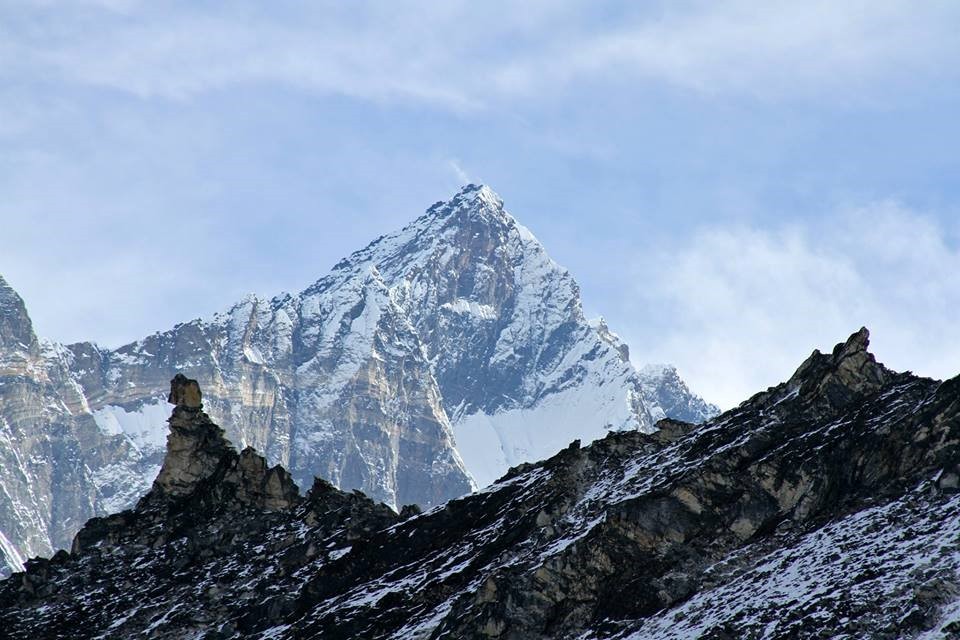
It is one of the most tricky questions, crossed by any trekkers planning to trek in any altitude region. What should I pack? And you should make the best choice for what to carry and what not to carry. Sometimes carrying too much or too little can challenge you during your trek. first of all, you should be sure when in which season you want to trek Everest Base Camp. You should be up-to-date with the weather, climate, and temperature during the trekking months. Then you can pack the gear accordingly.
Trekking on the short route like Ghorepani Poon Hill Trek, Langtang Region Trekking, and other short trekking required the fewer gear and equipment compared to trekking on a long route like Everest Base Camp Trek, Annapurna Base Camp Trek, Annapurna Circuit Trek, Upper Mustang Trek and many more so packing the gear according to is most important.
For example, including a laptop in your packing list is not necessary unless you are going on a mission or blogging, as you need a power bank and charger for it too, which consumes unnecessary space. You need to buy pretty expensive internet. So carrying the right gear and equipment can make your trip more exciting and enjoyable.
The below-listed gears and equipment you can purchase in Kathmandu or can be rented in Namche bazaar but understand that buying the sold gears and equipment can run your trek of being the sold cheaper, local equipment may not be too standard to trek in the altitude.
So try to buy high-quality gear for the Everest Base Camp Trek as you may have to face the very cold condition on the trek.
To pack your packing easily we have listed some necessary gear and equipment for your Everest Base Camp Trek
Clothing
Upper Body
- Base Layer
- Insulation layers
- Outer Layer
For the lower body
- Trekking trousers and shorts
- Waterproof trousers
- Underwear
Headwear
- Hat
- Scarf
- Beanie
- Neck gaiter
- Gloves
- Inner gloves
- Outer insulated Gloves
Footwear
- Hiking Boats
- Trekking shoes and Sandals
- Hiking socks
- Warm Thermal Sock
- Gaiter
Besides these you also need to pack the below-listed things:
- Day pack
- Buffer Bag
- Duffel Bag
- Rain cover
- Sleeping bags
- Liner
- Earplugs
- Trekking poles
- Sunglasses
- Headlight
- Water bottles
- Towel
- Lock
- Waterproof bags
- Camera
- Portable charger
- Books
- Cards
- Passport and money
Everest Base Camp Trek Best Time Accommodation
Choosing the best accommodation during the trek is a bit tricky. Everyone is concerned about what types of accommodation they will be using during their Everest Base Camp trekking. Trekking at an altitude where modernization and commercialization are still far from reach, we may not get the 5-star hotel or lodge. On the whole trek, you have to depend upon the tea house are its facilities. So choosing the route you want to walk plays a vital role in your accommodation.
Almost all the teahouses during the Everest Base Camp Trek provide basic services with standards of comfort and cleanliness. During the trek, there are plenty of options to choose from for your accommodation from 5-star hotels to basic accommodation at Tengboche.
Here I have a detailed explanation about the accommodation you will likely have during the trek:
Accommodation at Lukla
After having the scenic flight from Kathmandu to Lukla, most people prefer to hike straight to Phakding. But few choose to spend the rest of the day at Lukla because of its beauty and plenty of good hotels. Although they are a little more expensive than the lodges you will get the best services with the good facilities than tea houses.
Accommodation at Phakding
After Lukla, Pkhading is the next stop you will spend overnight. It is the small villages that come passing the Dudh Koshi River valley north of Lukla and south of Monjo. Manly trekkers choose to spend their nights at Pkhading over Lukla because it offers affordable and accessible accommodation services with enough hotels. If you are a budget traveler, then this is the best stop with a more comfortable option.
Accommodation at Namche Bazar
Namche Bazaar is the famous stop of the Everest Base Camp Trek. It is a popular stop as many trekkers are likely to spend 2-3 days enjoying the hospitality and getting to the altitude.
The capital of the Sherpa community, this place has more to offer and is worth exploring, hike to the viewpoint above the village to see the first glimpse of the world's iconic peak Mt. Everest. Far from the beauty, this place has some luxury hotels and the best tea houses with great facilities and services. You will have a wide variety of tea houses from Luxury to basic.
Accommodation at Tengboche
Tengboche is also a popular stop during the Everest Base Camp Trek. This small village is famous for the Tengboche monastery. The place has barely 5 hotels you may have to spend your night at the basic teahouses with basic facilities. Even the few tea houses provide a room attached with bathrooms and hot shower, or you have to walk distance for the bathroom and hot shower.
Most of the trekkers prefer staying overnight at Tengboche so that they can attend morning prayers at the monastery.
Accommodation at Dingboche
Dingboche is a beautiful Sherpa village that offers a wider range of lodges and teahouses than Tengboche, this place also has a bakery and internet café facilities around. Most trekkers spend 2 days so that they can adapt to high-altitude atmospheric pressure.
Accommodation at Lobuche
Lobuche is the last stop in the tea house, their village offers limited tea houses and hotels. But the accommodation you get here is quite basic. During the peak time, it can be even harder to find the basic tea houses so to avoid this you have to book the room in advance so that you don’t need to share your room with strangers.
Accommodation at Gorakshep
Gorakshep is your last stop during your ascend, it is always crowded. In terms of accommodation, it is average here. Lodges offer basic facilities. It's hard to get a room here so you might end up sleeping in the dining room or spend your night in the tent.
What about food in Everest Base Camp Trek Best Time?
Getting out of your zone, food is something you don’t want to compromise at all. During the Everest Base Camp Trek, you will get a wide variety of options from typical Nepali Dal-Bhat, soup, momos, and fried rice to continental dishes like noodles, spaghetti, spring rolls, and many more.
As you walk deep into the mountains, the price of the food also increases as everything available is transported via yaks, horses, or helicopters but the menu available is not limited. But for the price and menu you can compare a hotel in Lukla with a hotel in Tengboche/ Lobuche.
You can estimate $ 20-25 per day for food and water on the trek. The amount covers a light breakfast, fine lunch, and dinner with some hot drinks and water. Price can fluctuate if you are conservative.
If you choose some restaurant outside the teahouse or lodge you stay then you need to add some amount to your list.
Snacks: most of the shops/tea house along the trail sells cookies, and candies, you can also see more options in the stores available in Lukla, Phakding, Namche, and other famous stop zones.
Vegan: if you are vegan then feel at ease you will have a beautiful journey cause there are several vegan hotels and restaurants along the trail. For breakfast, you can have porridge and friend potation. During lunch and dinner, you can have “Dal Bhat” a popular Nepali food that includes a wide variety of vegetable curries and pickles, boiled rice, and very nutritious lentils.
Note: we recommend you avoid the meat throughout the trip as they are not fresh, as they are bought from the villages below Lukla or transported from Kathmandu.
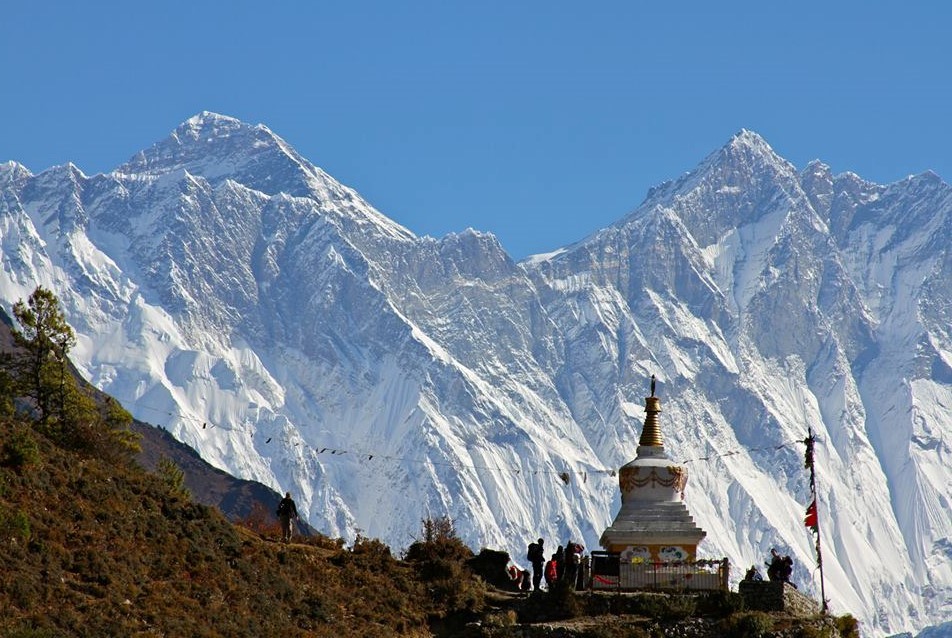
Everest Base Camp Trek Best Time Detailed itinerary
Day 01: Arrival at Kathmandu (1350 metres)
Namaste and welcome to Nepal! A Nepal Hiking Trek representative will pick you up from the airport and transfer you to your hotel. Enjoy your leisure time exploring the city.
- Overnight in Hotel of Kathmandu
Day 02: City tour or leisure day
Today is your spare day so you can enjoy this day exploring the major heritage sites of the Kathmandu valley including the famous Pashupatinath temple, Swyombhunttha, and Boudhanath, if time remains you can also explore Kathmandu Durbar Square, Bhaktapur Durbar square and many more which is listed in the UNESCO world heritage sites.
You can also spend this day buying the things you need for the trek around the Thamel.
- Overnight in the Hotel of Kathmandu
Day 03: Scenic flight to Luka (2869 meters) and trek to Phakding
After having the morning breakfast, our guide will catch you at the hotel. Enjoy around 35 35-minute mountain flight to Lukla (2840 meters), which is adventurous and scenic with majestic views of the Himalayan vista, flowing rivers, and green dense forest.
Have a refreshment, and begin the walk to reach Phakding (a beautiful village located in the north of Lukla in the Dudh Koshi River valley) which takes around (3-4 hours)
- Overnight in the Lodge/Teahouse of Phakding
Day 04: Walk to Namche Bazaar
Today you will walk for around 4-5 hours to reach Namche Bazaar (the capital of the Sherpa community)
Passing through some scattered villages like Monjo and Jorsale which leads to the Sagarmatha National Park. At Sagarmatha National Park you will walk deeper into the alpine and oak woods, and cross the small rivers and dense forest covered with colorful rhododendrons.
You will also see the glacier, and rare species of birds and animals including red panda, snow leopard, and Himalayan Thar if you are lucky on one hand in another you will enjoy the presence of the Sherpa culture.
Arrive at the Namche bazaar, enjoy the breathtaking views of the snow-capped mountains infant of you including Thamserku, and Kongdi RI Himal, and explore the sherpa culture of the villages.
- Overnight at Namche Bazaar.
Day 05: Rest and acclimatization day at Namche
You will spend the acclimatizing day in the Namche. It is a great place for acclimatization as it has beautiful places for accommodation and breathtaking views.
Enjoy the panoramic views and the wonderful highlights of the snow-capped mountains.
Hike to the Everest View Hotel which offers a beautiful glimpse of the world's highest mountains Mt Everest and other surrounding peaks
You can explore the Everest photo galley and the Sherpa Culture Museum to learn more about the region.
- Overnight at Namche Bazaar
Day 06: Walk to Tengboche
Leaving the Nache bazaar we will start our journey walking through the beautiful settlement of the Pungki Thank, Mt Everest can be seen from here
Walk along the side of the Dudh Koshi River to reach the village of Tengboche. It is about 5 hour's walk, where you will see the panoramic views of the rivers and snow-capped mountains, you will also see the joining of the two rivers- Dudh Koshi and Imja Khola with the beautiful hills covered by rhododendrons.
If you have free time explore the Tengboche monastery- the oldest monastery in the Khumbu region.
- Overnight in the basic teahouse at Tengboche
Day 07: Walk to Dingboche
Today’s journey will be to reach the Dingboche.
We will cross the Pangboche village and Imja rivers through a suspension bridge moving towards the village of Dingboche. Dingbove is also known as the "Summer Valley" of Khumbu. Enjoy the majestic of Lhotse, Ama Dablam, and Island Peak.
- Overnight at the basic teahouse at the Dingboche.
Day 08: Rest day
After Namche Bazaar, you will have a rest day at Dingboche. It does not mean having a bad day umm today you will walk to Nagarjun- which is also an attractive place for traveling while being in this village.
Nagarjun (5100 meters) at the top hill above the Dingboche.
Enjoy hiking and steep walking. Hiking to the Nagarjuna from the Dingboche village takes around 3-4 hours from here you can enjoy the majestic views of the snow-capped mountains including Thamserku and Ama Dablam.
Day 09: Trek to Lobuche
Passing through the dense and beautiful forest, crossing the Chuki Lara a beautiful rock-strewn sloping from where you can enjoy the amazing peaks. The walk passes the Khumbu glacier, you can also enjoy the view of Mt Nuptse.
Arrival at the Lobuche, the journey is adventurous.
- Overnight in the teahouse at Lobuche.
Day 10: Trek to Gorakshep
Finally, the day is here, today you will reach the base camp of the world's highest peak, Everest Base camp.
Start the journey by walking slowly to avoid the high altitude sickness. You will see the beautiful Lobuche to enjoy the view of the highest glacier in the world, the Khumbu Glacier.
Arrive at Gorak Shep, and enjoy the gorgeous views of the mountain.
Then walk to the base camp and celebrate your journey with beautiful views of the Khumbu Icefall, and Khumbutse Peak. After enjoying some time at the base camp with beautiful landscapes and peaceful surroundings. And get back to Gorak Shep.
Day 11: Trek to Kalapther (5545 meters), descend to Gorakshep-Pheriche
Enjoy the morning hike to Kala Pather, the viewpoint of the journey to enjoy the breathtaking views of the gorgeous view of Mt Everest and many other surrounding peaks. You can also enjoy the sunrise views from the point.
After spending some time at Kala Pather, return to the Gorak Shep and walk down to Pheriche.
- Overnight at Pheriche in a Basic teahouse.
Day 12: Back to Namche Bazaar
After having the early breakfast, we start the walk back to Namche bazaar moving through the Tengboche.
From Tengboche, now move down to the Phugki thanka, cross the Kyangjuma walk through the dense forest of oak and alpine covered with beautiful rhododendrons to reach Namche Bazaar.
- Overnight at Namche Bazaar.
Day 13: back to Luka
From Namche Bazaar you will walk on a steep, downward path crossing the suspension bridge above the Dough Khoshi rivers which flows with a gorgeous feel to the natural surroundings.
Today you can also celebrate the beautiful success of your trek.
Overnight at Lukla
Day 14: Fly back to Kathmandu
Today you will fly back to Kathmandu after enjoying the beautiful views of the landscapes and successful walk to base camp, and scenic views one more time during the flight.
After arriving at Kathmandu airport, then your guide transfer you to your hotel.
Day 15: Rest day/ Shopping (Farewell Dinner)
Today you will enjoy the rest day or shopping around Kathmandu city, you will have the farewell dinner hosted by the Nepal Hiking Trek.
- Overnight at a hotel in Kathmandu.
Day 16: Departure day
With the final goodbye, you will be transferred to the airport from your hotel by Nepal Hiking Trek representatives. Visit more!
Can I Customize my Everest Base Camp Trek Best Time?
Everest Base Camp Trek is the most popular trekking in Nepal, it’s the best chance to step foot on the base camp of the World's highest mountain- Mt Everest. Any trek to the region can be customized in minimum as well as maximum days. Normally, the Everest Base Camp trek starts from 12 to 16 days.
We operate the Everest Base Camp solo Trek package of 18 days, the Everest Base Camp Trek package of 16 days, and the Jiri to Everest Base Camp Trek of 21 days. So you can deduct or extend these days according to your interest and budget.
We have also set the different departure times for your ease, you can choose the date and let the walk begin.
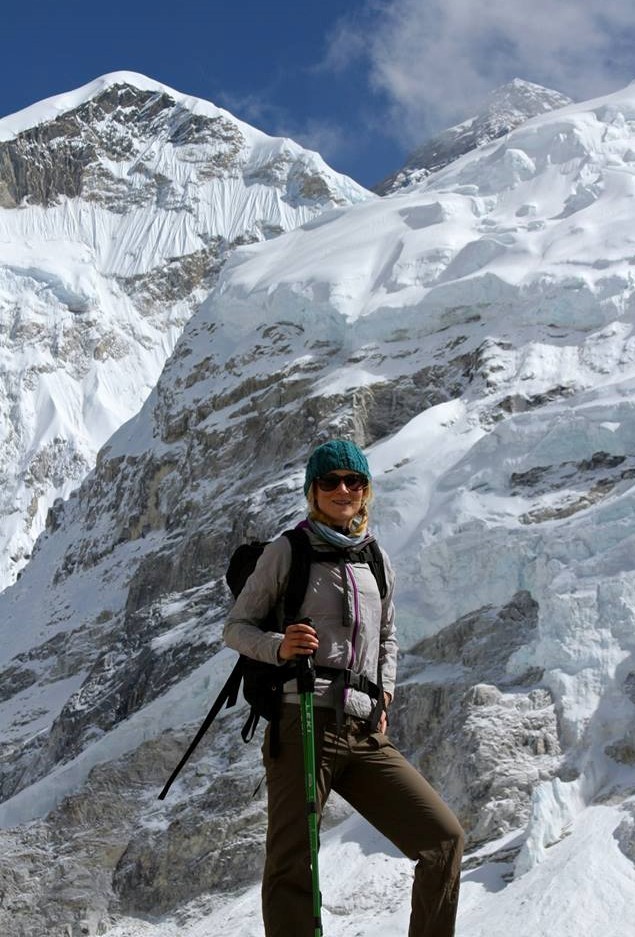
What is the best time to visit Everest Base Camp Trek 2024?
Hiking at a high altitude means hiking in the extreme cold and unpredicted weather conditions, normally the trekkers consider the three out of the 12 months to trek into the mountains due to the weather, the trend is to be a very mild and great time.
Trekking to the base of the world's highest mountain it is very important to be up to date with the weather and know the weather patterns of the region, to make the trek more exciting and avoid upcoming obstacles.
Trekking in different seasons in the altitude means you need to pack different accessories, you should consider many things so to have a peaceful time throughout the trek you should have enough information about the temperature, weather conditions, busyness of the route, and many other things.
Here I have described the season you are likely to experience during your Everest Base Camp Trek. Choose the trekking season wisely to enjoy the trek.
Peak Time:
March-May
The months of March, April, and May fall in the spring season and are considered the most favorable time to trek at the altitude. The season comes right after the end of the winter season so if you trek at the end of the winter season then you can experience some occasional snow showers. The weather is stable during this period and the perfect time for altitude hiking.
These months offer a pleasant environment with a pretty crowded route because of the stable weather trekkers around the globe choose this time to enjoy the beautiful mountain environment. Most climbing to the summit of Everest occurs this month so you will likely meet many climbers.
As the rhododendrons start to bloom, the dry forest changes to green, and you will get to see the beautiful flora and fauna of the region.
September- Mid November
The Autumn season months of September, October, and November are also popular trekking periods with very clear and warm days. Approaching the winter season, you can expect colder days and colder nights while trekking Everest Base Camp Trek, but this is just a small pay for the wonderful snowy mountain vistas. The weather is very pleasant with the fresh environment as the monsoon season swift all the dust, there are also fewer chances of weather disturbance however snowstorms can hit the region during this month, so picking the right gear and equipment is most important to enjoy the journey.
The route is quite busy compared to other months because of the warm and pleasant weather to travel. So in the high altitude, you may have to share your rooms with your friends so booking the room in advance is the best option for it.
Off-season:
December-February
Winter season- the months of December, January, and February fall. During his period the region experienced very cold periods of the trek, where the days were shorter and nights were long, and high possibility of snowfall so there was a high snow level on the route making the trail more challenging.
The average temperature during this month in the daytime drops around 15 degrees Celsius and at night drops below the freezing point to -30 degrees so carrying the correct and necessary gear is most important. If the cold weather does not bother you then trekking this time will be best as there are very few trekkers. You can enjoy the best views of the mountain without any disturbance. You can also easily get a room with a good discount.
June – August
Monsoon Season- the months of June, July, and August fall when you can expect rain. This time of year is known as the summer season. The weather is unpredictable, warm, and moist. The route tends to be very empty.
Trekking during this time you can expect leeches, heavy and continuous rainfalls, and a high possibility of finding bugs while walking into the forest. The morning and day usually get clear after receiving continuous rainfall during the night offering the best views of the snow-capped mountains. If the slippery trail does not bother you then you can enjoy the peaceful trek will a less crowded route.
There are also a few areas that fall in rain shadows like the Annapurna region, the Mustang region, and the Dhaulagiri region where you can trek during the monsoon time too. During this time, you will get the room and other services at a good discount.
The Everest Base Camp Trek 2024 Group trek/private trek
The Everest Base Camp Trek can be done solo or in a group. If you want to join the group then the group size depends upon your travel time and date, however, Nepal Hiking Trek runs a group maximum of 12–14 people but our typical group size range of 4–6 people each date. You can also book a private trip if you are not interested in joining the group.
How high is the Everest Base Camp?
Mt Everest Base Camp is 5,364 meters (17,598 feet) high.
Everest has two base camps: the North Base Camp, located in Tibet, at an altitude of 5,510 meters, and the South Base Camp, located in Nepal, at an altitude of 5,364 meters. The trek to the base camp on the south side is popular on the northern side.
The view of the world's tallest mountain Mt Everest from the base camp is blocked by Nuptse so to enjoy the clear views of the snow-capped mountain you should hike Kalapathar. Kalapathar is around 5555 meters high and offers panoramic summit views of Mt Everest, Mt Nuptse, and Mt Lhotse.
Useful info about Everest Base Camp Trek Best Time
The route to the Everest base camp is unspoiled and untouched by modernization and commercialization so try your best to keep the environment clean and appreciate the local's culture and tradition.
Do not through any litter: try to make the Everest litter-free, and put the wrappers in the nearby dustbin along the trail. Sanitary napkins should be wrapped properly and through it in the right place. Try to bring the items that can be reused with you.
Be kind: locals are kind-hearted, they love sharing their hearts with you, so respect them, be kind to them, and show the greeting to be loved by them.
Respect local culture, tradition, and customs: Respect the culture and appreciate the customs of the locals during any trekking in Nepal. Their customs, culture, and living styles are important for them so respect and try to fit in with their culture while you are there.
Trek with a professional guide and porter: The route can be damaged or can be obstacles during the peak as well as off-season which means a high chance of getting lost. It is the Himalayas, all negligence can take your lot, get advice from a guide to make any decision.
Respect the food: Do not through food after you order. The food items are all carried by helicopter or flight from Kathmandu. It takes more than a week to reach the food item in the event, so do respect to food and order as you like to have. Do not waste.
Pack your bag and get ready for this adventurous journey with Nepal Hiking Trek Pvt. Ltd. If anything related to trekking in Nepal bothers you then please reach us: at [email protected]





